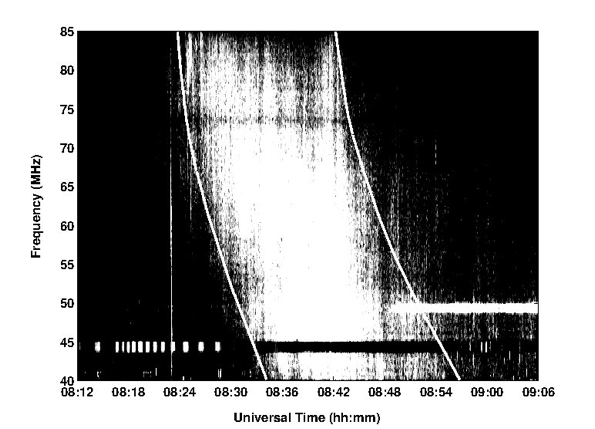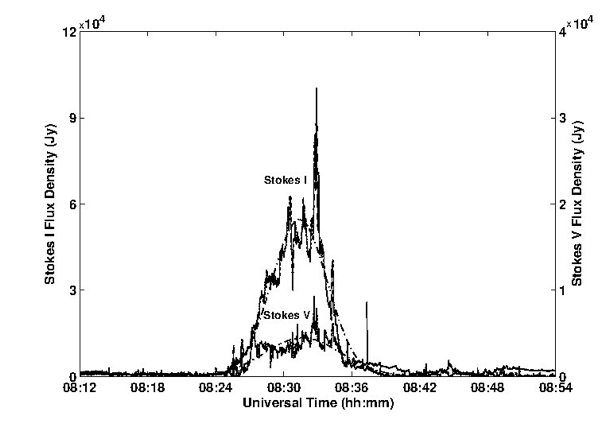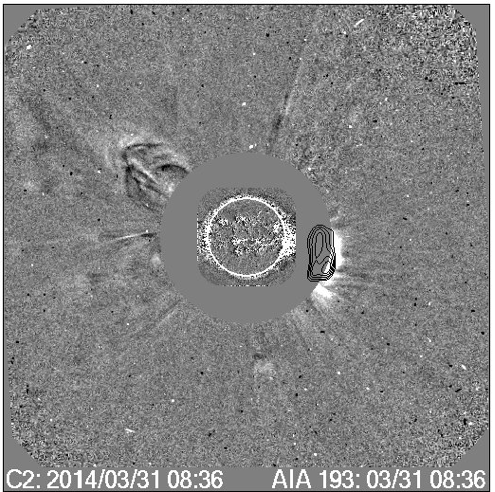Quasi-continuum radio emissions of duration ~10-60 min that occur along with flares and coronal mass ejections (CMEs) in the solar atmosphere are termed as type IV bursts. The bursts are non-thermal in nature and can be classified into two categories, i.e. moving type IV (type IVm) bursts and stationary type IV (type IVs) bursts, depending on their time-frequency characteristics in the dynamic spectrum. Amongst the two, the former has a comparatively closer association with CMEs. This provides an opportunity to independently infer some of the characteristics of CMEs like the electron density, strength of the associated coronal magnetic field, etc. from simultaneous observations of the two phenomena. Ever since the launch of space missions like the Solar and Heliospheric Observatory (SoHO) and the Solar-Terrestrial Relations Observatory (STEREO), it has become possible to observe CMEs with comparatively good contrast, better time cadence, and closer to the Sun. These advantages facilitate comparison with complimentary and simultaneous ground-based observations of the associated radio transients. We report low-frequency (< 100 MHz) observations of a moving type IV radio burst that had close spatio-temporal association with a white-light CME. The radio burst was observed with the Gauribidnur RAdioheliograPH (GRAPH), Gauribidanur LOw-frequency Solar Spectrograph (GLOSS), and the Gauribidanur Radio Interfometric Polarimeter (GRIP) in the Gauribidanur observatory. The electron density near the burst region was estimated from white-light coronagraph polarized brightness (pB) images of the CME. The results suggest that second harmonic plasma emission from the enhanced electron density in the CME leading-edge (LE) is the cause of the radio burst.
Observations
Figure 1 shows the GLOSS observations of a type IVm radio burst in the frequency range 85 – 40 MHz on 31 March 2014 during the interval of 08:24 – 08:56 UT. Figure 2 shows the GRIP observations of the above event in the transit mode at 80 MHz. The estimated Stokes I peak flux density of the burst is ~57700 Jy. The corresponding estimate for Stokes V emission is ~4100 Jy. The degree of circular polarization (r) calculated using the above values is ~7%.

Figure 1: Dynamic spectrum of the type IVm radio burst observed with the GLOSS on 31 March 2014 during 08:24 – 08:56 UT in the frequency range of 85 – 40 MHz. The horizontal patches near 45, 50, and 75 MHz are due to radio frequency interference. The vertical emission feature close to 08:22 UT is a type III burst. The two slanted white lines indicate the approximate onset and the end of the burst at different frequencies.

Figure 2: Stokes I and V time profiles of the type IVm burst observed with the GRIP on 31 March 2014 at 80 MHz. The dash-dotted lines superposed on the time profiles are the fit to the observations.
Figure 3 shows the composite of the SOHO/LASCO–C2 and SDO/AIA 193 Å images obtained on 31 March 2014 at 08:36 UT, and GRAPH observations of the type IVm burst that day at 08:26 UT. The projected heliocentric distance of the centroid of the radio burst is 2.2 Rs. The peak radio brightness temperature (Tb) is 7 × 107 K. There was an associated SF class Hα flare and M1.4 class GOES soft X-ray flare (with peak emission at 08:07 UT) from active region AR12014 located at the heliographic coordinates S15W77. The latter suggests that the angle between the CME and the plane of the sky (POS) is ~13o for the SOHO/LASCO–C2 and GRAPH observations. The SOHO/LASCO–C2 observations show that the CME LE at 08:36 UT was at a projected heliocentric distance of 2.5 Rs (see Figure 3). The CME was also observed in the FOV of the STEREO–B/COR1 coronagraph. Its LE is at a projected heliocentric distance of 2.1 Rs. STEREO–B was behind Earth at E165o during the time of observation. The location of the flare therefore corresponded to 28o behind the east limb of the Sun for the STEREO–B view. Assuming that the projection effects vary as 1/ cos(f), where f is the angle from the plane-of-sky (POS), we calculated the de-projected heliocentric distance of the centroid of the type IVm burst from the GRAPH observations and the de-projected heliocentric distances of the CME LE from the SOHO/LASCO–C2 and STEREO–B/COR1 images. The estimated speed based on the linear fit to the combined height-time measurements is ~420 km/s.

Figure 3: A composite of the SOHO/LASCO–C2, SDO/AIA 193 Å images obtained on 31 March 2014 at 08:36 UT, and radio contours (up to 50% level) of the type IVm burst observed that day with the GRAPH at 80 MHz (over a bandwidth of ~ 2 MHz) close to 08:26 UT.
Analysis & Results
The average electron number density Ne in the CME LE at 08:30 UT is (6.7 +/- 3.2) × 106 cm−3. The Ne of the background corona at the location near the CME LE, estimated from observations at 08:00 UT, is (5.9 +/- 1.4) × 106 cm−3 using the method of spherically symmetric inversion (Wang and Davila, 2014). Therefore the total electron density (CME LE + background corona at that location) around 08:30 UT is (12.6 +/- 3.5) × 106 cm−3. Considering the 1\(\sigma\) error in the measurements, the upper limit to the estimated total electron density (i.e. CME + background) for the 31 March 2014 event at 08:30 UT is 16.1 × 106 cm−3. We assumed that the line-of-sight distance (LOS) of the CME LE (i.e. the depth of the CME LE) is equal to its width for these calculations. But the true depth might be lower by a factor of up to ~5 (see for example Gary et al., 1984), and hence the true total density of the CME LE in the present case might be higher than 16.1 × 106 cm−3. This implies that second-harmonic plasma emission is the most likely cause of the type IVm burst observations at 80 MHz since it requires only a marginally higher electron density (19.8 × 106 cm−3) at the location of the CME LE. In addition, we find that the electron density in the CME LE estimated using an independent pB difference image obtained with SOHO/LASCO–C2 at 08:54 UT and 02:54 UT (the closest epoch at which pB observations were available) also supports this claim.
Melrose, Dulk, and Smerd (1978) had shown that for solar radio continuum bursts due to second-harmonic plasma emission, the magnetic field strength B = (0.18 r f)/a(q), where a(q) depends on the angle q between the magnetic field and the viewing direction. We assumed a(q) ~ 1 since (i) the heliographic coordinates (S15W77) of the sunspot region associated with the type IVm burst correspond to a viewing angle q ~ 77o, and (ii) the half-power widths and heliocentric distances of type IVm bursts at 80 MHz correspond to an average cone angle of 30o (Robinson, 1978). The close spatial association between the type IVm burst and the CME LE, the occurrence of the CME close to the POS where the magnetic field is likely to be nearly perpendicular to the LOS, and the low values of the degree of circular polarization are consistent with this assumption. Substituting the values in the above equation, we obtain B ~ 1.0 G.
Summary
We carried out an analysis of the low-frequency radio observations of the type IVm burst associated with the white-light CME of 31 March 2014. The results indicate that the radio burst is due to second-harmonic plasma emission from the CME LE. The estimated strength of the magnetic field in the latter is B ~ 1 G at r ~ 2.2 Rs.
The above work has appeared in:
Hariharan, K., Ramesh, R., Kathiravan, C., & Wang, T. (2016). Simultaneous Near-Sun Observations of a Moving Type IV Radio Burst and the Associated White-Light Coronal Mass Ejection Solar Physics, 291 (5), 1405-1416 DOI: 10.1007/s11207-016-0918-x
*Full lis of authors: Hariharan, K., Ramesh, R., Kathiravan, C., & Wang, T. J.
References
Gary, D.E., Dulk, G.A., House, L.L., Illing, R., Sawyer, C., Wagner, W.J., McLean, D.J., Hildner, E.: 1984, Astron. Astrophys. 134, 222.
Melrose, D.B., Dulk, G.A., Smerd, S.F.: 1978, Astron. Astrophys. 66, 315.
Robinson, R.D.: 1978, Solar Phys. 60, 383.
Wang, T.J., Davila, J.M.: 2014, Solar Phys. 289, 3723.
